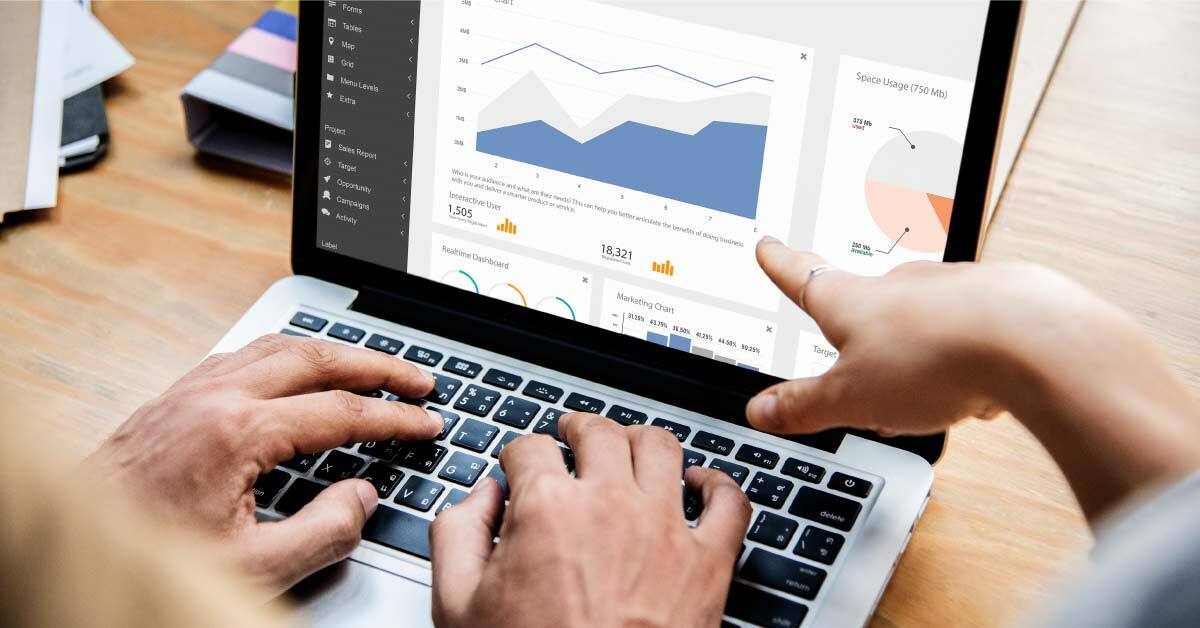In the ever-evolving landscape of search engine optimization (SEO), staying ahead of the curve is crucial. At Digilite we keep our fingers on the pulse. Google’s ranking algorithm, a closely guarded secret, determines the visibility of your website in search results. Recently, a leaked document has unveiled some of the inner workings of Google’s ranking factors. In this comprehensive guide, we’ll explore the top 200 ranking attributes that can significantly impact your SEO strategy and help you achieve higher search rankings.
Google’s Top 200 Ranking Factors
Understanding how Google ranks websites is the holy grail of SEO. While Google’s exact algorithm remains a mystery, the leaked document provides valuable insights into the factors that influence search rankings. Here, we break down the top 200 ranking factors, offering practical tips to optimize your website and improve your online presence.
Here are the top 200 ranking attributes based on the leaked document, ranked from most important and impactful to least:
- siteAuthority: Measures the overall authority of a website.
- clickThroughRate: Percentage of users clicking on a search result.
- pageLoadSpeed: Time it takes for a page to load.
- mobileFriendly: Performance on mobile devices.
- backlinkCount: Number of inbound links to a page.
- contentQuality: Overall quality of the content.
- userExperience: Factors impacting user satisfaction.
- timeOnPage: Average time users spend on a page.
- bounceRate: Rate at which users leave a site after one page.
- keywordRelevance: Relevance of keywords to the content.
- socialSignals: Engagement metrics from social media.
- contentDepth: Depth of information in the content.
- schemaMarkup: Structured data markup.
- freshness: How recently content was updated.
- userEngagement: Metrics like comments and shares.
- contentLength: Amount of text on a page.
- userSatisfaction: Measures of user satisfaction.
- dwellTime: Time spent on a page before returning to search results.
- internalLinking: Links within a website.
- pageTitle: Title of a webpage.
- URLStructure: Organization and readability of URLs.
- domainHistory: History of a domain.
- siteAge: Age of the domain.
- clickData: Data on user clicks.
- structuredData: Use of structured data for rich snippets.
- HTTPS: Use of HTTPS for secure connections.
- AMPUsage: Implementation of Accelerated Mobile Pages.
- userTrustSignals: Trust signals like SSL certificates.
- contentUpdates: Frequency and quality of content updates.
- metaDescription: Description in the meta tags.
- headerTags: Use of H1, H2, H3 tags for content structure.
- siteSpeed: Overall speed of the entire site.
- brandMentions: Mentions of the brand across the web.
- contentVariety: Variety of content types on the site.
- imageAltText: Descriptive text for images.
- canonicalization: Use of canonical tags.
- localization: Relevance of content to the user’s location.
- userFeedback: Feedback and ratings from users.
- videoContent: Use of video content.
- contentUniqueness: Uniqueness of the content.
- internalLinkQuality: Quality and relevance of internal links.
- outboundLinks: Quality and relevance of links to external sites.
- brandAuthority: Overall authority and reputation of the brand.
- scrollDepth: How far users scroll on a page.
- contentScannability: Ease of scanning the content.
- returningVisitors: Number of returning visitors.
- sessionDuration: Duration of user sessions.
- keywordDensity: Frequency of target keywords.
- userRetention: Ability to retain users on the site.
- userJourney: Mapping user journey on the site.
- domainTrust: Trustworthiness of the domain.
- keywordProximity: Proximity of keywords to each other.
- bounceDuration: Time before a user bounces from a page.
- userAccessibility: Accessibility features for users with disabilities.
- domainRelevance: Relevance of the domain to the content.
- errorRate: Rate of errors and broken links.
- topicalAuthority: Depth of coverage on a topic.
- contentPurpose: Purpose and intent of the content.
- userDemographics: Targeting based on user demographics.
- contentInterlinking: Linking between related content.
- industryRelevance: Relevance of content to the industry.
- searchIntent: Matching content to user search intent.
- brandLoyalty: Loyalty and repeat visits from users.
- negativeSEO: Impact of negative SEO attacks.
- contentFormat: Format of the content (text, video, etc.).
- SERPClickThrough: Click-through rate from the SERP.
- hostAge: Age of the hosting server.
- richSnippets: Enhanced search listings with additional info.
- voiceSearchOptimization: Optimization for voice search queries.
- siteNavigation: Ease of navigation on the site.
- contentAccuracy: Accuracy and reliability of the content.
- searchVisibility: Visibility in search results.
- brandReputation: Overall reputation and trust in the brand.
- localCitations: Mentions of the business in local directories.
- userTrustworthiness: Trustworthiness based on reviews and ratings.
- socialEngagement: Engagement on social media platforms.
- contentSatisfaction: Satisfaction derived from the content.
- userInteraction: Interaction metrics like clicks and scrolls.
- pageRelevance: Relevance of the page to the search query.
- SERPFeatures: Use of SERP features like featured snippets.
- contentCredibility: Credibility and authority of the content.
- siteArchitecture: Structure and organization of the site.
- contentReadability: Readability of the content.
- contentEngagement: Engagement metrics for content.
- technicalSEO: Technical SEO factors like sitemaps and robots.txt.
- organicTraffic: Amount of organic traffic.
- linkDiversity: Diversity of the link profile.
- imageQuality: Quality of images on the site.
- localBusinessListings: Listings in local business directories.
- topicalRelevance: Relevance of content to specific topics.
- socialShares: Number of social media shares.
- contentOriginality: Originality and uniqueness of the content.
- contentEngagementRate: Rate of engagement with the content.
- domainAuthorityHistory: Historical changes in domain authority.
- linkProfileQuality: Quality of the overall link profile.
- pagePerformance: Performance metrics for individual pages.
- keywordVariations: Use of keyword variations.
- brandSearchVolume: Volume of searches for the brand.
- userBehaviorMetrics: Various metrics on user behavior.
- timeToFirstByte: Time to first byte response from server.
- keywordPlacement: Location of keywords within the content.
- brandPresence: Presence of the brand across different platforms.
- linkContext: Context in which backlinks appear.
- siteUptime: Consistency and reliability of site uptime.
- contentRelevance: Relevance of the content to the target audience.
- multimediaUsage: Use of multimedia elements like images and videos.
- textFormatting: Use of bold, italics, and other formatting for emphasis.
- linkAnchorVariations: Variations in anchor text used in links.
- onPageSEO: Optimization of on-page elements like titles and headers.
- contentTimeliness: Relevance of content to current events and trends.
- SERPLocalization: Localization of search results for specific regions.
- socialProof: Indicators of social proof like testimonials and reviews.
- userDeviceType: Performance of the site across different devices.
- contentDigestibility: Ease with which content can be understood and digested.
- linkStability: Stability and longevity of backlinks.
- pageBreakdown: Structure and organization of content within a page.
- linkRelevance: Relevance of backlinks to the page content.
- contentClarity: Clarity and precision of the content.
- voiceSearchQueries: Optimization for common voice search queries.
- linkReciprocity: Reciprocal linking patterns.
- contentPrioritization: Prioritization of content elements on the page.
- siteInteractivity: Interactive elements like quizzes and polls.
- userGeneratedContent: Inclusion and impact of user-generated content.
- linkFreshness: Recency of backlinks.
- contentActionability: Actionability and practical value of the content.
- bounceReasons: Analysis of reasons why users bounce.
- userFlow: Flow and progression of users through the site.
- visualHierarchy: Visual organization and hierarchy of page elements.
- contentEncapsulation: Encapsulation of key points and takeaways.
- siteCustomization: Customization options available to users.
- algorithmicPenalties: Impact of algorithmic penalties on rankings.
- backlinkAuthority: Authority of sites linking to the page.
- pageUsability: Usability and functionality of the page.
- contentGranularity: Granularity and specificity of the content.
- adRelevance: Relevance of ads to the content andHere’s the continuation and completion of the list:
- adRelevance: Relevance of ads to the content and user intent.
- contentUsefulness: Practical value and usefulness of the content.
- anchorTextDiversity: Variety in the anchor text of backlinks.
- loadTimeConsistency: Consistency of page load times.
- contentLegibility: Legibility of the content, including font size and color contrast.
- userSupport: Availability of user support features like chatbots and contact forms.
- backlinkDiversity: Diversity of sources for backlinks.
- contentTransparency: Transparency of information and sources cited.
- linkAuthoritySpread: Distribution of backlink authority across the site.
- contentReputation: Reputation of the content based on user feedback and citations.
- pageFunctionalities: Functionalities available on the page, such as forms and interactive elements.
- contentSpecificity: Specificity and detail of the content.
- userTaskCompletion: Success rate of users completing intended tasks on the site.
- linkContextualRelevance: Relevance of the linking context to the page content.
- contentErrorRate: Rate of errors or inaccuracies in the content.
- adLoadSpeed: Speed at which ads load on the page.
- userRetentionTime: Time users stay engaged on the site across multiple visits.
- linkBuildingStrategy: Effectiveness and strategy behind link-building efforts.
- contentAlignment: Alignment of content with user expectations and search intent.
- contentHighlighting: Effective use of highlights and emphasis in the content.
- userJourneyMapping: Mapping and optimizing the user’s journey through the site.
- contentResponsiveness: Responsiveness of the content layout to different screen sizes.
- externalLinkQuality: Quality and relevance of external links pointing to the site.
- siteConsistency: Consistency in content and design across the site.
- localSEO: Optimization for local search engine results.
- contentOutreach: Effectiveness of content promotion and outreach efforts.
- backlinkProfile: Profile and quality of backlinks.
- siteBreadth: Breadth and comprehensiveness of the site’s content offerings.
- contentVerification: Verification of content accuracy and sources.
- contentInteractivity: Level of interactivity within the content.
- userFeedbackIncorporation: Incorporation of user feedback into content updates.
- linkNeighborhood: Quality and relevance of sites linking to the content.
- contentFlexibility: Ability to update and adapt content easily.
- userDataPrivacy: Protection of user data and privacy.
- pageDepth: Depth and thoroughness of the page content.
- linkReputation: Reputation and trustworthiness of linking domains.
- contentConsistency: Consistency of information and messaging in the content.
- userGoalAchievement: Rate at which users achieve their goals on the site.
- linkNetwork: Network and relationships of linking sites.
- contentDiversification: Diversification of content types and formats.
- userSessionFlow: Flow and navigation of user sessions on the site.
- algorithmicUpdates: Impact of algorithmic updates on rankings.
- contentLifecycle: Lifecycle and updates of content.
- socialBookmarking: Use and effectiveness of social bookmarking.
- linkAcquisitionRate: Rate of acquiring new backlinks.
- contentPartnerships: Partnerships and collaborations for content creation.
- userContextUnderstanding: Understanding and addressing user context in content.
- contentPersonalization: Personalization of content for individual users.
- brandConsistency: Consistency of the brand message across content.
- userTrustMetrics: Metrics indicating user trust in the content.
- contentInteraction: Interaction and engagement with content elements.
- siteReputation: Overall reputation of the site in its niche.
- linkVelocity: Speed at which new links are acquired.
- contentContribution: Contributions from various authors and experts.
- userRetentionStrategies: Strategies to retain users on the site.
- contentCollaboration: Collaboration with other sites and influencers.
- pageLoadExperience: Overall experience of page load from user perspective.
- linkCleanliness: Absence of spammy or low-quality links.
- contentExpansion: Expansion and updates of existing content.
- userOnboarding: Onboarding process for new users.
- siteModularity: Modularity and scalability of the site architecture.
- contentContext: Contextual relevance of the content to current trends.
- userFollowThrough: Follow-through rate on user actions.
- brandEngagement: Engagement with the brand across platforms.
- contentDistribution: Distribution channels and reach of the content.
- userValue: Overall value provided to users by the content and site.
Optimizing for these 200 ranking factors can seem daunting, but focusing on the most impactful ones can yield significant improvements in your search rankings. By prioritizing user experience, content quality, and technical SEO, you can create a solid foundation for sustained SEO success. Stay informed, adapt to changes, and continuously refine your strategy to stay ahead in the competitive world of search engine optimization.
10 Tips on How to Rank Better
Key Ranking Factors:
- Site Authority Tip: Build high-quality backlinks from reputable sites to increase your site’s authority.
- Click-Through Rate (CTR) Tip: Optimize your meta titles and descriptions to be compelling and relevant to improve CTR.
- Page Load Speed Tip: Use tools like Google PageSpeed Insights to identify and fix speed issues on your site.
- Mobile Friendliness Tip: Ensure your site is responsive and provides a seamless experience across all devices.
- Backlink Count Tip: Focus on earning backlinks through quality content and outreach strategies.
- Content Quality Tip: Create valuable, in-depth content that addresses the needs and interests of your audience.
- User Experience (UX) Tip: Conduct UX audits and make improvements based on user feedback and analytics.
- Time on Page Tip: Engage visitors with rich, informative content and interactive elements.
- Bounce Rate Tip: Improve page relevance and ensure clear navigation to reduce bounce rates.
- Keyword Relevance Tip: Perform keyword research and integrate relevant keywords naturally into your content.
Stay tuned for more insights on each of these factors in our upcoming posts. For now, start implementing these tips and watch your SEO performance soar!
At Digilite, our SEO team is always out there looking for updates, so we keep our finger on the pulse of the latest trends and changes in the SEO landscape. By leveraging the insights from these ranking factors, we help our clients achieve superior search visibility and sustained online success.





